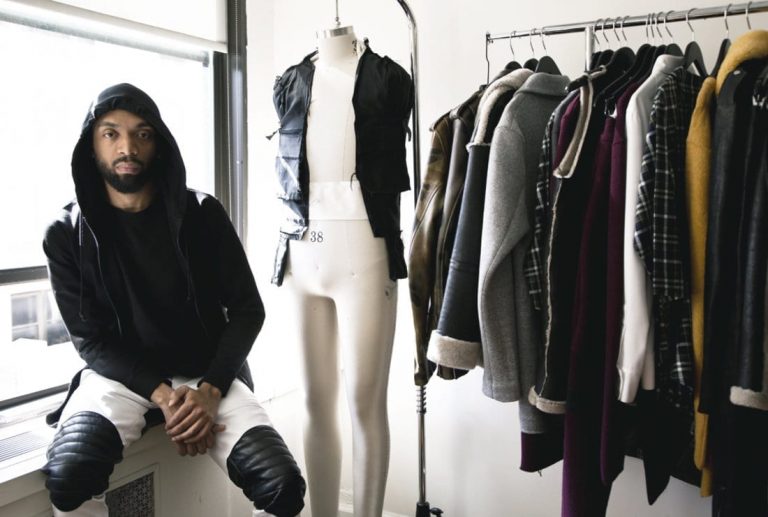In a fashion industry that prides itself on celebrating difference, diversity and inclusivity, the talent of Black designers remains marginalized at best and too often suffers from systemic hiring discrimination.
To be clear, the established mainstream fashion design community does not have a diversity problem, it has a “Black problem.”
Designer: KIBWE CHASE-MARSHALL
In most luxury, contemporary and mass-market design studios, talented Black designers are rarely given equal opportunities to reach senior designer, design director, creative director or VP of design roles.
Often, they are blacklisted by influential recruiters and hiring managers, leaving them with little or no prospect of stable employment and market-level salaries.
Designer Maxwell Osborne
Tired of seeing this most blatant form of discrimination rampant while an entire industry profits off of connections to black celebrities and the recent increase in black casting, I decided to do something about it.
Over the holidays, I began conceiving what would become a social media campaign, with the goal of asking and answering my own questions with the goal of creating a plan for the fashion design community to move toward more equitable hiring practices.
#BreakSilenceBreakCeilings went live on Wednesday, January 3rd.
Designers Darlene and Lizzy Okpo:
A few days later, H&M featured a picture of a black boy wearing a hoodie reading “coolest monkey in the jungle,” proving how recklessly fashion brands with few black leaders are exploiting black imagery. (The Swedish retailer has appointed a diversity leader since the incident.)
Timing is everything in the fashion world, and it’s time to address the industry’s systematic marginalization of Black designer talent.
Designer Carly Cushnie
My path to working in fashion was non-traditional: in 1997, while I was struggling to secure funding to attend NYU and find my footing, I was offered a job as a designer at Michael Kors, where I had worked as an intern for two seasons.
As prospects for funding my studies began to fade, I eagerly accepted the role and threw myself into the challenge of learning new skills.
Designer Tracy Reese
While I’m not formally trained in apparel design (beyond taking a few courses at Pratt), both my parents are architects so I’m very familiar with drafting, and my sketching abilities proved invaluable to the team as we designed hardware details and accessories specifically for the show, and used illustrations to communicate styling direction across categories.
Over the next decade, I held positions at studios such as Isaac Mizrahi, Oscar de la Renta, Ralph Lauren, Gap Inc., J. Mendel and Original Penguin, developing my abilities to lead fittings, evaluate and select fabrics, and develop color stories, as well as develop talent, forecast market trends and build profitable vendor relationships.
Designer Samantha Black
But in the professional environments I worked in, I rarely encountered a Black face. No matter where I worked, I was always the Black team member with the highest title. I was also always paid much less than my non-Black coworkers.
By the early 2000s, headhunters were still approaching me, but I found they rarely extended the same glowing endorsement to me that many of my non-Black colleagues enjoyed.
Read the full article at Business of Fashion.
Kibwe Chase Marshall


